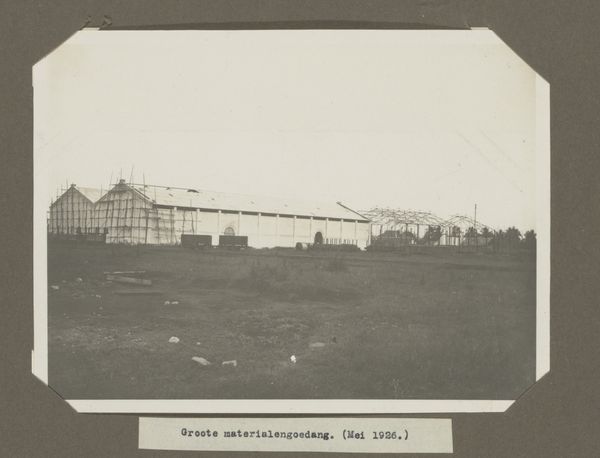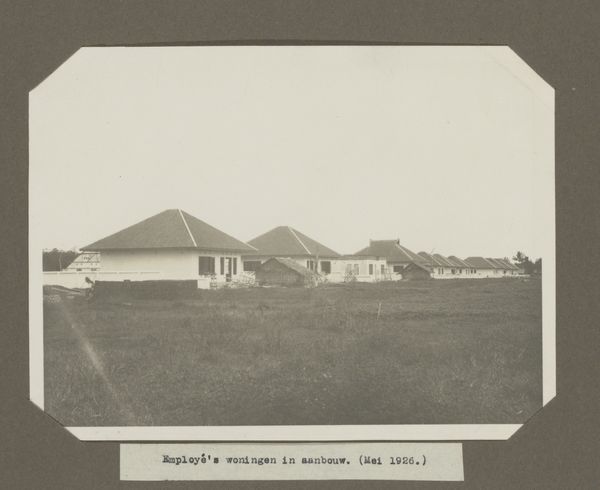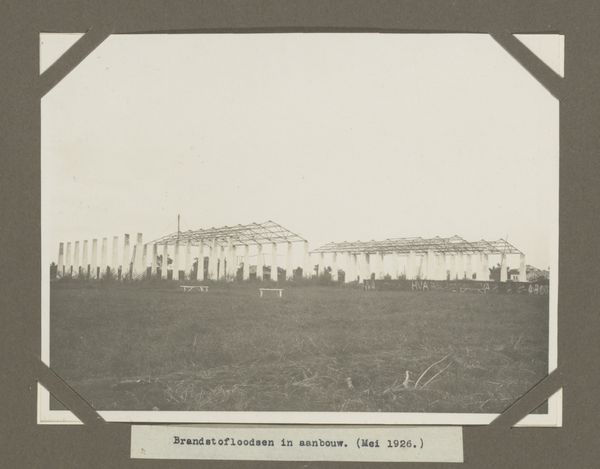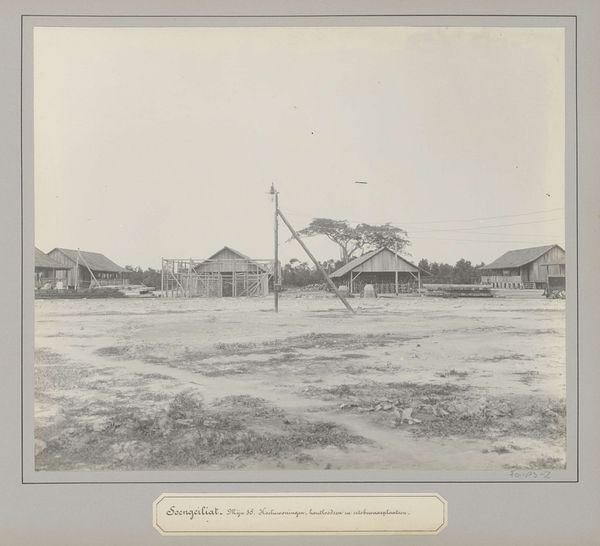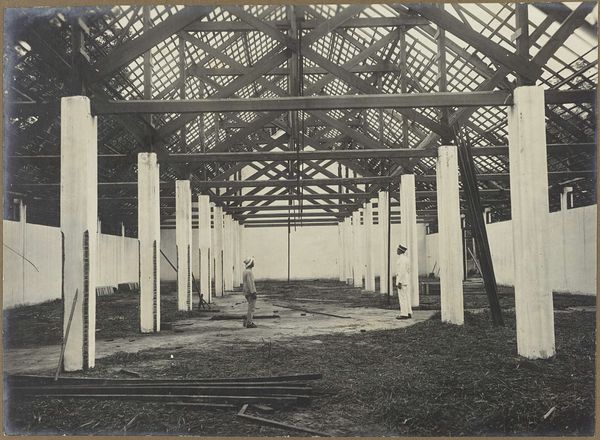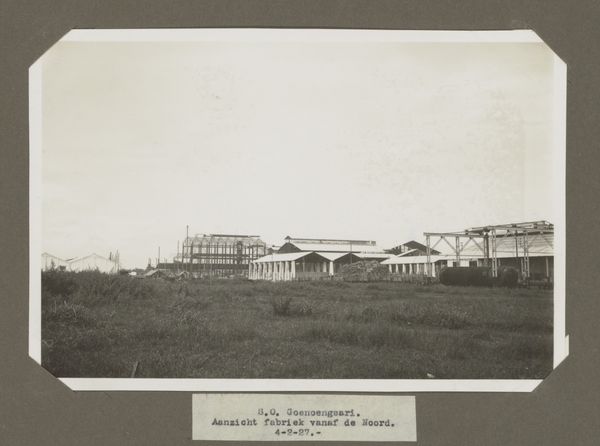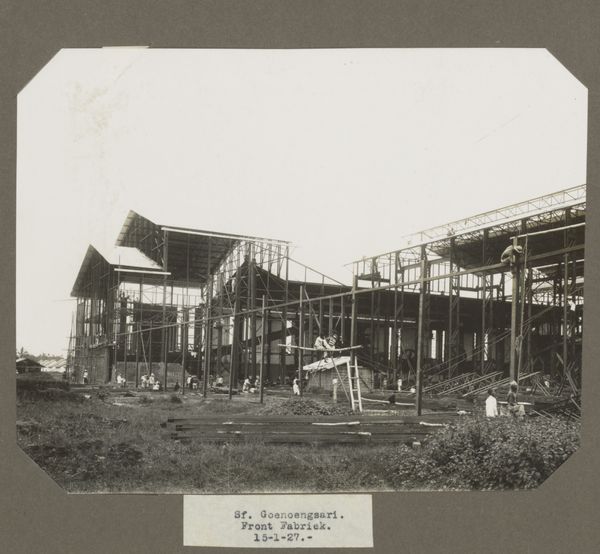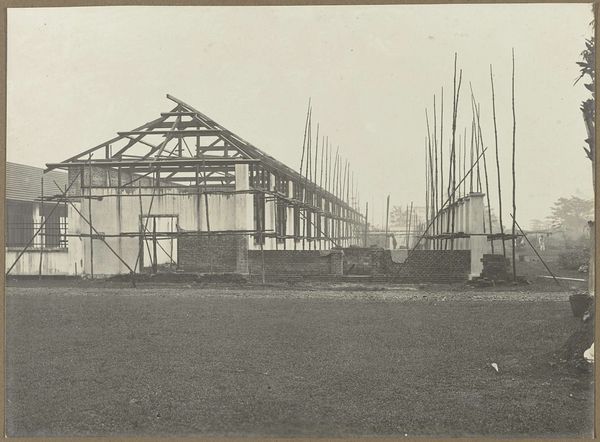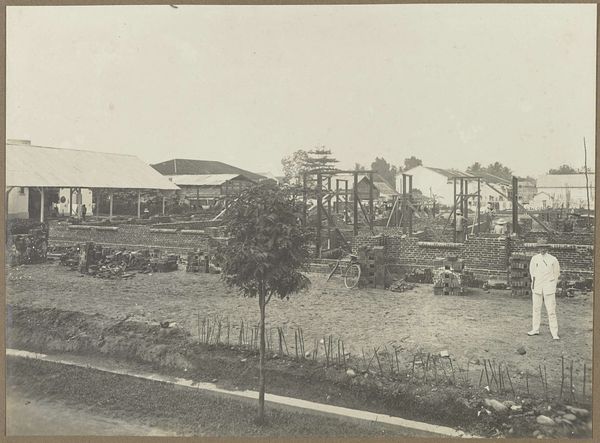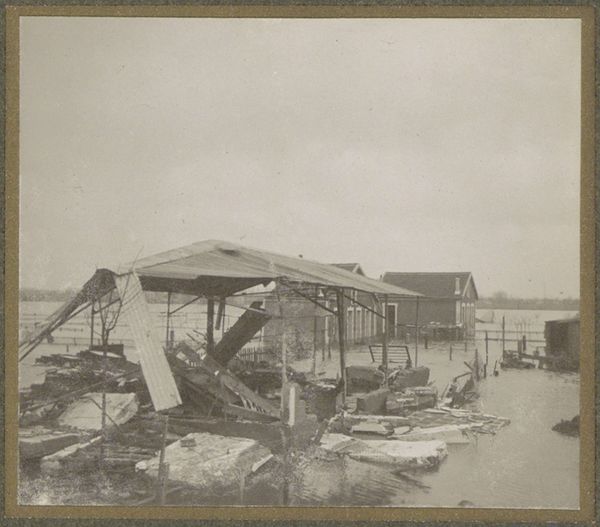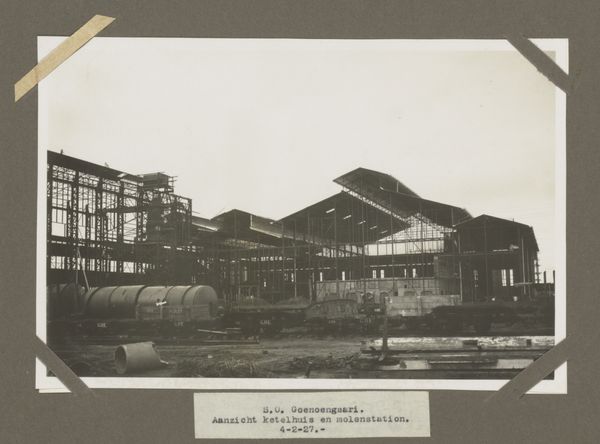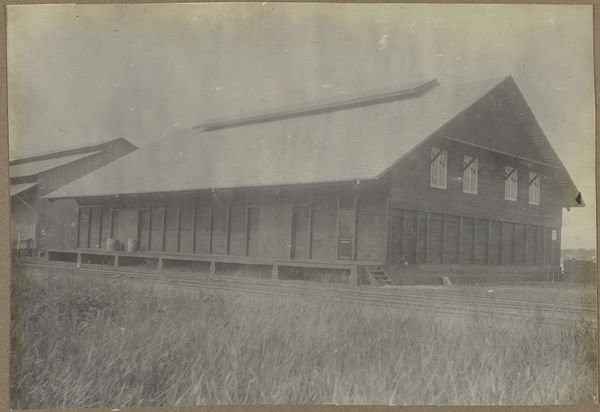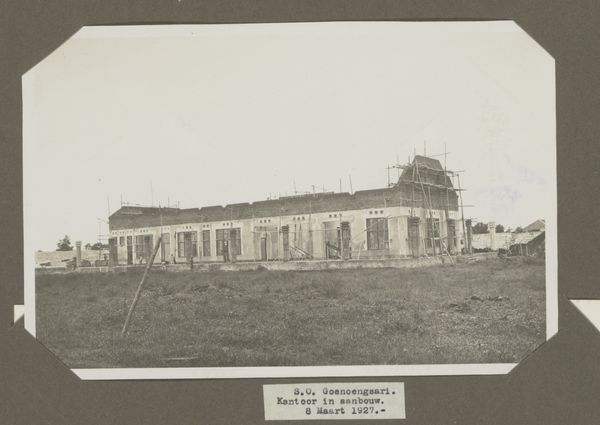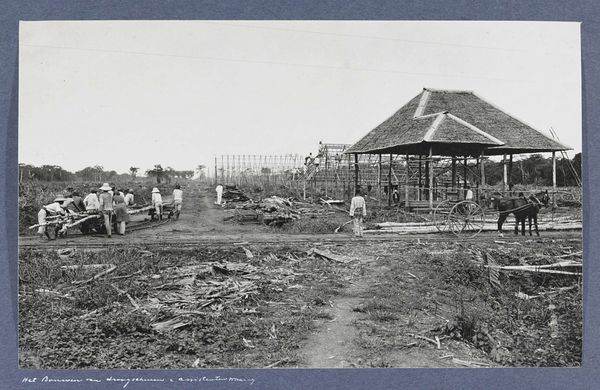
photography, gelatin-silver-print
#
landscape
#
archive photography
#
photography
#
historical photography
#
gelatin-silver-print
#
cityscape
#
modernism
Dimensions: height 157 mm, width 212 mm
Copyright: Rijks Museum: Open Domain
Curator: Looking at this gelatin-silver print, “Employé’s woningen in aanbouw,” or “Employee Housing Under Construction,” dating back to May 1926 and housed here at the Rijksmuseum, I'm struck by its directness. Editor: It certainly evokes a stark, utilitarian aesthetic. The rawness of the incomplete structures against that open field suggests a society focused on productivity and basic needs, wouldn't you say? Curator: Absolutely. Notice how the photograph’s materiality—the grain of the gelatin silver, the deliberate composition—highlights the labor inherent in building. This wasn't just about creating houses, but about constructing a workforce, a social infrastructure tied to the means of production. Editor: Yes, and how the houses are presented, almost as modules, gives a sense of the planned community. You can see the emergence of social engineering principles influencing architecture, intending to create healthy environments for workers, though often with a distinct lack of ornamentation, emphasizing function over aesthetics. Curator: Precisely! The photographer, though anonymous, captures not merely a building site, but a moment where social policy is manifested in brick and timber. This image asks us to consider the implications of employer-provided housing – a complex interplay of dependence and perhaps, a constrained form of care. Editor: It’s interesting to consider who commissioned this photograph. Was it intended as a progress report for the employer, or perhaps for archival documentation of their corporate social responsibility, or even a tool for attracting more workers to that location? Curator: It raises valid questions about the photograph's function. Its existence signifies the value placed on controlling and displaying aspects of working-class life. Editor: A photograph intended as a kind of… propaganda perhaps? All in all, an important reminder that urban development and working class accommodation should be critically evaluated in relation to broader historical contexts of labour, power and social transformation. Curator: Indeed, the piece reveals not just structures, but the structure of social relations and control that permeated early 20th-century life.
Comments
No comments
Be the first to comment and join the conversation on the ultimate creative platform.
